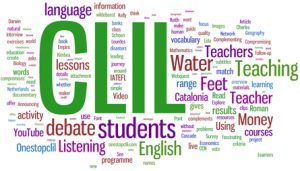
What do we want?
A topic-based, fun curriculum that combines literacy content and skills with the nuts and bolts of English language learning.
When do we want it?
Well, to be honest, I’ve been after something even approximating to the above for quite some time.
There is a trend in international education to combine language learning with subject content. It has a terrible acronym: CLIL (Content and Language Integrated Learning). Reminds me of when large companies like Unilever change the name of a household brand, just so they can consolidate several international products into one (‘Cillit Bang’ or ‘Cif’?). In a less obviously naff way, CLIL seeks to bring subject knowledge, skills and language into one curriculum.
However, when applied to English, especially in the primary years, the application of CLIL is thorny. Separating and sorting content and language objectives is not a quick job. Happily, at least the acronym for primary is a bit more palatable: CLIP (Content and Language Integration in Primary). But the process of mapping language learning objectives across a language arts/literacy programme is extremely complex and requires expertise in language acquisition.
I’ve heard tell that it takes around seven years for an EAL student to achieve academic fluency in English. For them to be able to write and speak in formal English appropriate for thoughtful analysis, justification and reflection. How, in the early stages of an EAL student’s education, do we measure out language to them, bearing in mind that it needs to be spiralled (spiralled and interleaved?) in order to be remembered?
Some schools run ESL streams, focussing solely on language acquisition, until students reach a specific language level (intermediate/upper-intermediate) at which they can function well in the literacy mainstream. This is good, but expensive. Essentially, you have to staff and run a department alongside the mainstream school with a fluctuating clientele.
Another approach is to divide the delivery of English into a literacy track and a language track (three days language, three days literacy, for example). This can work for school populations that are uniformly EAL: i.e. bilinguals schools abroad. I implemented one of these in a bilingual school in Europe. It was functional and enabled us to achieve our language level goals (PET by year 6, FCE by year 9, and so on). However, it wasn’t economical in terms of curriculum delivery; there was a lot of overlap; and there was far too much explicit, decontextualised grammar, which is especially dull for students who have acquired English through early immersion.
All of the above has led me back to CLIL (or CLIP). Essentially, I want to privilege literacy, but provide a little more foregrounding for vocabulary and grammar. The UK English curriculum (and the Cambridge International variant that I currently teach) has an implicit functional outcome (to create thoughtful and accurate communicators) which sits perfectly with the goals of EAL. It just doesn’t measure out grammar and vocabulary in the same way as a second language course.
I want to avoid lengthy and decontextualised lessons on grammar points. I would much rather the grammar arose through meeting the purpose of a task. For example, a unit on The Future would enable lots of use of future tenses. This could segue into a mini-unit on Possibilities, in which work on conditionals would be relevant to the task.
As I plan my literacy units, I can pick out the functional aspects of the language required and plan for practice of these structures. Where certain functions are not immediately apparent, I may have to plan in purposeful activities (using these functions) that link to the overall topic.
How might this work in practice? Let’s say I’m planning Year 6. I’m doing a unit on persuasive writing, which is essentially narrative tenses and modals. So I can revise all of the tenses up to past perfect (‘had been’) – maybe past perfect progressive (‘had been doing’) if we’ve got up a head of steam. At the same time, I need to meet the standards of the Preliminary English Test (PET). I can see from the handbook that the students will need to be able to “express agreement and disagreement, and contradict people”. I’m already working on persuasion, which is also a PET and a literacy objective. I need only shoe-horn in some work on modals of obligation, necessity and prohibition (should, must, ought to, etc) alongside some lexical chunks of phraseology (e.g., “I couldn’t agree more”, “on the other hand”, “never let it be said that”) and I have the bones of a functional literacy unit with explicit practice of language points linked to an EAL syllabus and exam.
I’m planning four topic-based units over the course of the next three months, to be trialled next year. I’m going to use the principles of backward planning (Understanding by Design, Wiggins & McTighe) to work from Big Ideas to assessments and then to individual lessons. The Big Ideas will be a combination of functional communication (EAL/literacy) and literature (literacy). By melding the two curricula together at the earliest stage, I hope to avoid the “coverage trap” where I race through a long list of functions, grammar and vocabulary, with no time for revision or deeper understanding.
If I succeed, I’ll have created a curriculum that gives the students lots of practical and authentic tasks, with clear modelling of grammar and a steady influx of new vocabulary related to each task. Each unit will have both content (literacy) and language objectives.
As I go through this process, I’ll be publishing my handiwork. I’d be very grateful for your comments.

One thought on “One Curriculum to Rule Them All: Combining Literacy and EAL in the Primary Classroom”